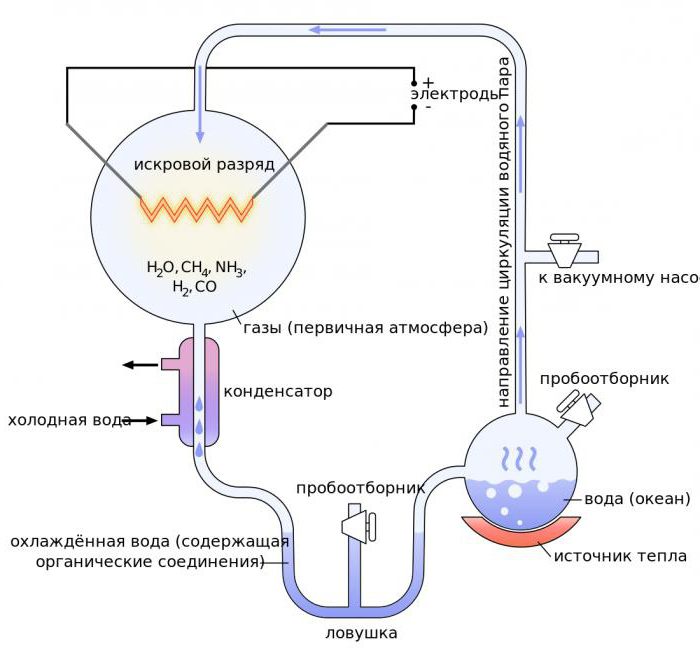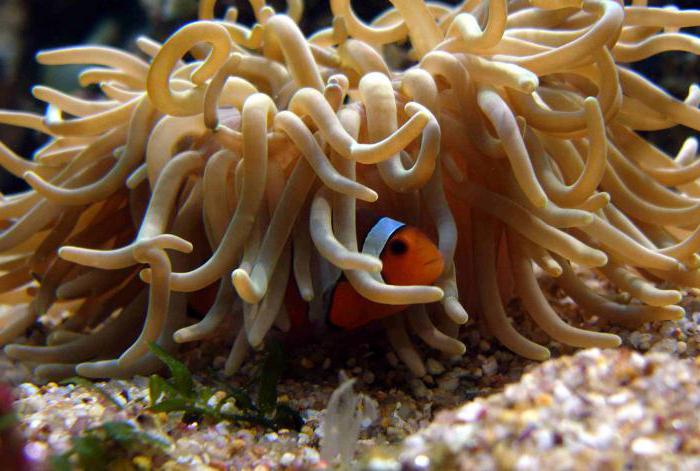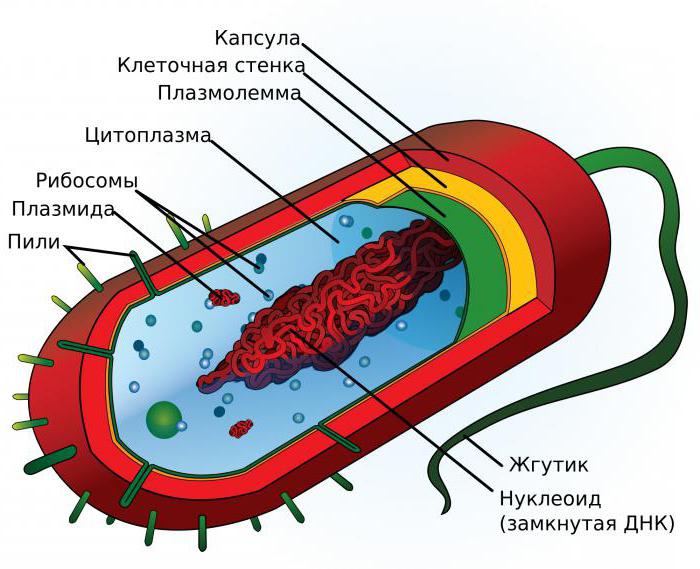Natural sciences are called upon to help mankind know both themselves and the world around them and, of course, to find out how life on our planet arose in all its forms and manifestations. Without going into religious dogmas about the creation of the world by the highest spiritual force - God, we will study the hypotheses of the origin of living matter that biology operates with. The main stages in the development of life on Earth will help us uncover the problem of its origin and manifestation in the world around us.
Representation of scientists on the process of evolution of wildlife
If you put together all the biological species of organisms, both modern and long extinct, you get an astronomical number - up to one billion species. It is not surprising that scientists who lived at different times sought to single out the main stages in the development of life on Earth, which led to the emergence of these species of living organisms, as well as to the formation of a modern picture of nature. Back in the 18th century, the founder of taxonomy, Karl Linney, laid the foundation for this science on the principle of “living from living,” in which he argued that life can arise only from an existing living substance. Linnaeus did not even allow a hint of the so-called spontaneous generation of organisms. The German biologist E. Haeckel was the first to express the idea of monophilia - the origin of all living organisms from one ancestor. Jean-Baptiste Lamarck also defended the idea of a single-celled ancestral form, the occurrence of which occurred in the early stages of the development of life on Earth. Summarizing all of the above, it can be argued that the hypotheses that exist in science about the origin of life are classified into two groups. The first is abiogenic; it includes ideas about the formation of living matter from inanimate nature (A. Oparin, D. Haldane, S. Miller). The other is biogenic, it contains ideas about the appearance of living beings only from their own kind (R. Virkhov, K. Linney, C. Darwin).

Did the primary organisms have a common ancestral form?
The first stages of the development of life on Earth, namely, abiogenic (chemical), then the period of the appearance of biopolymers (proteins and nucleic acids), called prebiological and, finally, the stage of biological evolution (the formation of primary unicellular organisms). They were combined and called biopoiesis. Some researchers (for example, D. Bernal, S. Miller) have proposed the idea of progenot, the progenitor from which archebacteria, eubacteria, and nuclear cells originated. Other researchers believe that eukaryotes did not arise from progenot, but were the result of symbiosis, or formed due to changes in the outer membrane of the protobiont. We consider these hypotheses in more detail.
The Oparin – Haldane Conjecture
Among the many scientific versions trying to explain the phenomenon known in science as the prebiological stage of the development of life on Earth, the hypothesis of coacervate drops is very popular. It is formulated by the Russian scientist A.I. Oparin. Similar ideas were voiced by the British researcher D. Haldane. The ideas of scientists echoed the hypothesis of spontaneous generation of life, long known in biology.
The essence of the hypothesis of coacervates
Academician A. Oparin suggested that the groups of molecules of organic compounds that appeared as a result of the processes of the chemical stage were able to create a fairly dense shell. Thus, they were separated from the primary broth - the aquatic environment of the ancient ocean. The scientist called these groups of molecules coacervates. They were already capable of independent existence, continuing to exchange with the primary solution. According to Oparin, the properties of coacervates were very important in their ability to grow and crush (multiply). D. Haldane, relied on the experiments of Miller-Urey, in which a complex of organic substances was experimentally obtained from a mixture of methane, ammonia, hydrogen and carbon dioxide. It included molecules of amino acids and simple sugars. This led to the possibility of the appearance of isolated structures - probionts.

According to Oparin and Haldane, the initial stages of the development of life on Earth, which led to the formation of primary complexes - the precursors of cells, provided the basis for the further process of evolution of living matter. It should be noted that for the experiments, scientists successfully simulated possible conditions that could be in the atmosphere and in the primary oceans, namely: high temperature and pressure, ionizing radiation and electric discharges.
Probionts and their properties
The earliest stages of the development of life on Earth - the catarchea, and then the archaea, were marked by a transition from self-organizing coacervates (probionts) to primary living cells. It became possible due to the unique properties of probionts: the ability to form isolated membranes, the ability to the simplest forms of reproduction, elementary processes of exchange with the environment. The self-organized nucleoprotein molecules that arose as a result of the chemical phase provided the probionites with the manifestation of the most important property of living matter - the ability to transmit hereditary information.
Characterization of the first living organisms
Quite a long time ago (approximately 3.5 billion years ago) sedimentary rocks were formed in which traces of organic life were found. They had the appearance of calcareous membranes of cyanobacteria and the remnants of the murein walls of bacterial cells. The geochemical conditions of the lithosphere in the Archean era were constantly changing, therefore, the primary ecosystems of prokaryotes could adapt to them by accumulating many phenotypic variants. The photosynthesis carried out by blue-green algae (cyanobacteria) ensured a cardinal change in the gas composition of the primary atmosphere of the Earth, which allowed the further release of living creatures from the aquatic habitat to land. The activities of the first prokaryotic organisms, and these were mainly sulfur and iron bacteria, led to the formation of not only sedimentary rocks, but also oil and natural gas.
Why the emergence of eukaryotic cells became possible
As we mentioned earlier, the photosynthetic activity of green and purple sulfur bacteria, as well as iron bacteria, contributed to the formation of a shielding ozone layer and the appearance of aerobic eukaryotic cells. In other words, the first 3 stages of the development of life on Earth led to the formation of biocenoses containing unicellular and multicellular eukaryotic organisms. Most scientists are inclined to believe that their occurrence occurred about 600 million years ago. Initially, nuclear organisms were represented by unicellular flagellum forms. As a result of divergence, the first plants came from them - algae, as well as protozoa and fungi. Of some interest is the opinion of some researchers that prokaryotes are a dead end branch of evolution, since they practically did not change in the first stages of the development of life on Earth. Biology puts forward two reasons for explaining the lack of evolutionary development of nuclear-free organisms.

The first of these is the inability of prokaryotic cells to increase organization and differentiation. The second reason is the rigid rigid inherited material of prokaryotes, represented by a single circular DNA molecule called a plasmid.
Symbiosis that led to revolutionary changes in nature
It is customary to explain the appearance of nuclear cells in scientific circles from the standpoint of symbiogenesis - the theory proposed by A. Schimper. So the formation of the cell nucleus, the presence of which is the main sign of eukaryotes, as well as the formation of chloroplasts and mitochondria became possible as a result of the transformation of some aerobic bacteria. Having penetrated into the primary cell with a hereditary substance isolated by a membrane, the bacteria synchronized their metabolism with the host cell. As a result, they lost the ability to exist independently outside the cell and became its obligatory organelles. A hypothesis explaining the appearance of chloroplasts is also noteworthy. After all, we must not forget that it was the appearance of these organoids that provided the phenomenon of autotrophic nutrition and the process of photosynthesis. Following A. Schimper, such famous Russian scientists as K. S. Merezhkovsky, B. M. Kozo-Polyansky and others drew attention to a group of photosynthetic bacteria capable of symbiosis with heterotrophic cells. Once in the cytoplasm, they apparently assimilated with cellular metabolism and began to function as organoids, later called chloroplasts. Heterotrophic cells themselves changed into unicellular green algae, becoming the first autotrophic eukaryotes.

Vendian biogeocenoses
So, the coexistence of several types of nuclear-free organisms - bacteria - could lead to the formation of a new living system - a eukaryotic cell. Continuing to study the first stages of the development of life on Earth, let us dwell on the Vendian period of the Proterozoic era, which replaced the Archean. In the aquatic environment - the main cradle of life on the planet, the first biogeocenoses formed. The producers in them were photosynthetic bacteria, as well as unicellular and colonial green algae.
They secreted oxygen, synthesized organic substances used by heterotrophic organisms: unicellular protozoa, as well as multicellular forms: intestinal and trilobites. The Vendian period ends with the first stages of the development of life on Earth. The eras and the periods following it were to carry out further processes of the evolution of living nature, which were based on hereditary variability and natural selection.